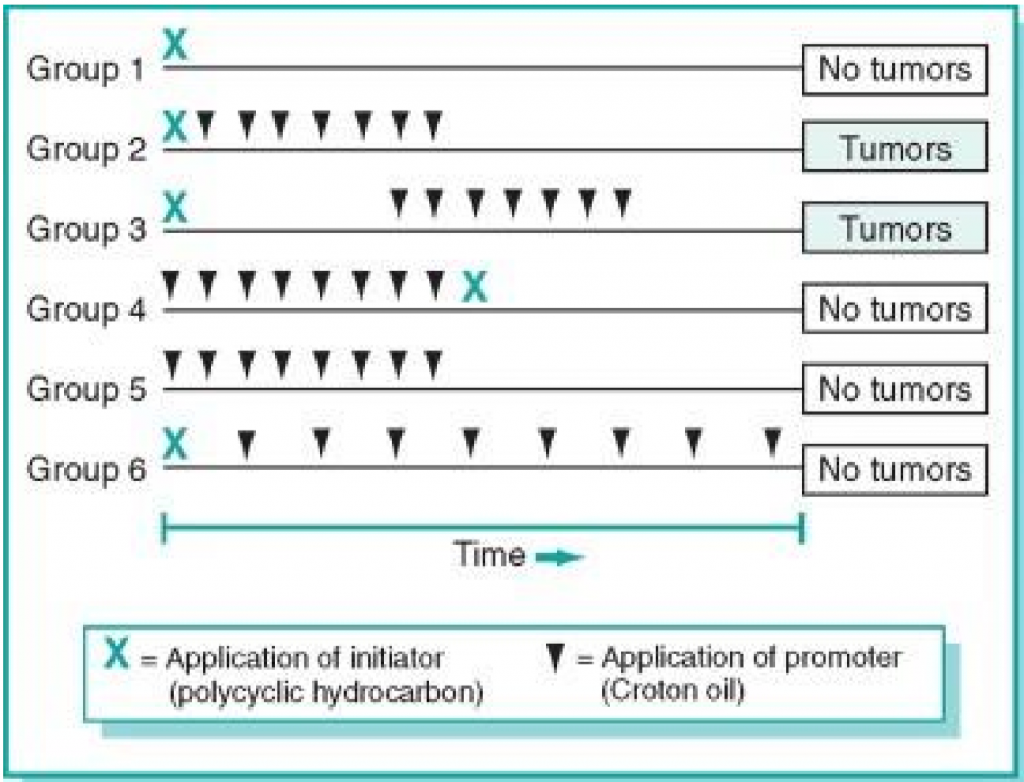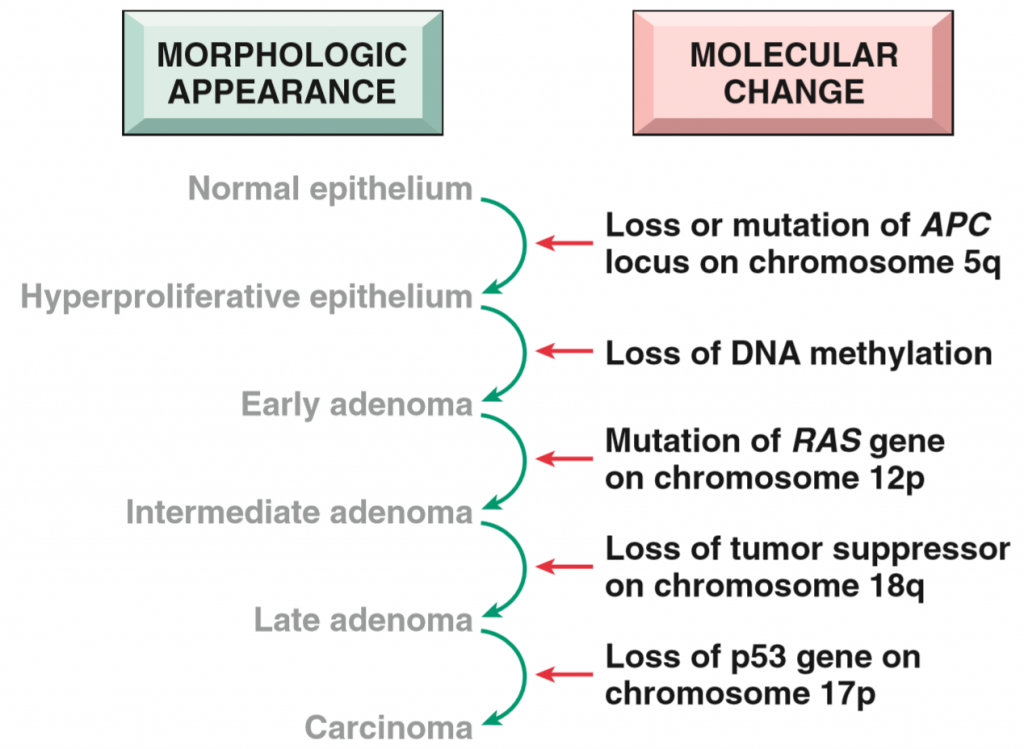Page created on November 27, 2018. Last updated on December 18, 2024 at 16:56
Chemical cancerogenesis
Cancer isn’t a disease where only one single mutation occurs. Cancer formation has many steps, and doesn’t just require one mutation, but many. This was proven in an animal model for chemical cancerogenesis.
Mice were divided into six groups. Most of them were given a carcinogenic compound (polycyclic hydrocarbons, a cancer initiator), and most of them were given a co-carcinogenic compound (croton oil, a cancer promoter). Co-carcinogenic compounds aren’t carcinogenic by themselves, but they increase the carcinogenic effect of carcinogenic compounds. The result from the study can be seen below:

Only the mice who were given initiator and regular application of promoter developed tumor. From this can we draw the conclusion that cancer formation is a multistep process.
Carcinogenic compounds have many characteristics, like:
- Cause permanent DNA damage
- Highly electrophilic
- Bind to DNA, RNA or proteins
- Can be either direct or indirect-acting
Indirect acting carcinogens aren’t carcinogenic by themselves but become carcinogenic when converted by enzymes such as cytochrome P450. Examples are polycyclic hydrocarbons, aromatic amines and azo-dyes.
Direct acting carcinogens don’t require enzymatic conversion to become carcinogenic. They are often weaker carcinogens than the indirect acting ones. Chemotherapeutic drugs that are alkylating agents are used to treat certain types of tumors. These agents cause DNA damage, which tumor cells are more sensitive to than normal cells are, to kill the tumor cells. However, they are carcinogenic by themselves, and can cause acute myeloid leukaemia.
Initiators can mutate any gene in the chromosome, but the particularly important targets in tumor genesis are RAS and p53. Another example of an initiator is the aflatoxin B1, a toxin produced by a fungus called Aspergillus. This toxin is responsible for a high incidence of hepatocellular carcinoma in Africa. Aflatoxin B1 causes a mutation in p53.
Some other important carcinogens, that can be found in the workplace and at home are:
- Vinyl chloride
- Arsenic
- Nickel
- Chromium
- Insecticides
- Fungicides
- Polychlorinated biphenyls
- Nitrosamine
Radiation cancerogenesis
Many types of radiation are carcinogenic, including:
- UV radiation
- Ionizing radiation
- Particle radiation
- α radiation
- β radiation
- γ radiation
- X-ray
The degree of carcinogenity of UV radiation depends on three things:
- Type of UV-light
- Intensity of exposure
- Quantity of melanin in the skin
Melanin protects against UV-light. Fair-skinned people living in high-risk areas, like Australia are at the highest risk. UV-light causes cancers like melanoma, squamous cell carcinoma and basal cell carcinoma. The former is associated with intermittent UV exposure, while the latter two are associated with total (cumulative) exposure to UV.
The UV-light from the sun can be divided into three types: UVA, UVB and UVC. Of the three is UVB believed to be responsible for skin cancers. UVB causes formation of pyrimidine dimers in the DNA. Each cell has a capacity to fix pyrimidine dimers, however cancers occurs when this repair capacity is overwhelmed.
Xeroderma pigmentosum is a genetic disorder where the pyrimidine dimer repair capacity is decreased, causing people to have extremely high sensitivity to sunburn and sun-related cancers.
Ionizing radiation and particle radiation are also carcinogenic. People associated with Chernobyl, Hiroshima, Nagasaki and uranium miners all have significantly larger risk for developing cancer, like skin, lung, breast, colon and thyroid cancer.
Multistep carcinogenesis of colorectal cancer
Research has formulated a model for the development of colorectal cancer. The process is best explained by this picture:

Note that the process didn’t become cancerous until it lost the p53 gene at the very end. Up until then it was just an adenomatous polyp (adenoma). Most adenomas never lose their p53 function and therefore never turn malignant.